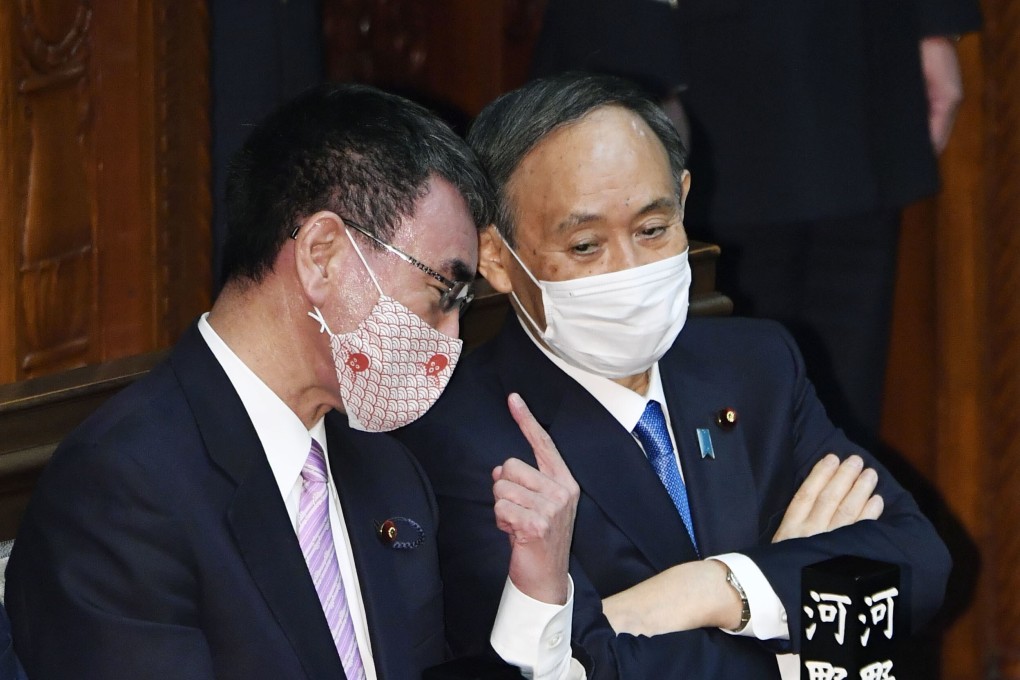Opinion | Japan’s next prime minister? Vaccine tsar Taro Kono is in with a shot as Suga steps down
- A battered health system, a tepid economy, a demoralised population and plummeting support. There’s no Suga-coating the last days in office of Japan’s outgoing prime minister
- Now the race is on for his successor. Among the possibilities are ex-foreign minister Kishida and would-be first female PM Sanae Takaichi. But media-savvy Kono could be just the boost the LDP needs

Suga made the sudden announcement this Friday amid wrangling among the various LDP factions, as the worsening unpopularity of his government ultimately undid his premiership.
The loss of the mayoral election for Yokohama City on August 22, in Suga’s own constituency, confirmed fears among party bosses that the LDP faces dropping from its current comfortable two-thirds majority in the lower house of the Diet, to a potential loss of its simple majority. As a general election is due after the current four-year term of the House of Representatives expires on October 21, this would leave the LDP reliant on its coalition partner Komeito to form government.

00:53
Japanese Prime Minister Yoshihide Suga will not seek re-election as party leader
It had been widely expected that 72-year-old Suga would nevertheless contest the leadership election scheduled for September 29, when the LDP’s 383 Diet members and an equal number of delegates from LDP branches will vote for the party president, requiring a simple majority of 766 votes.
